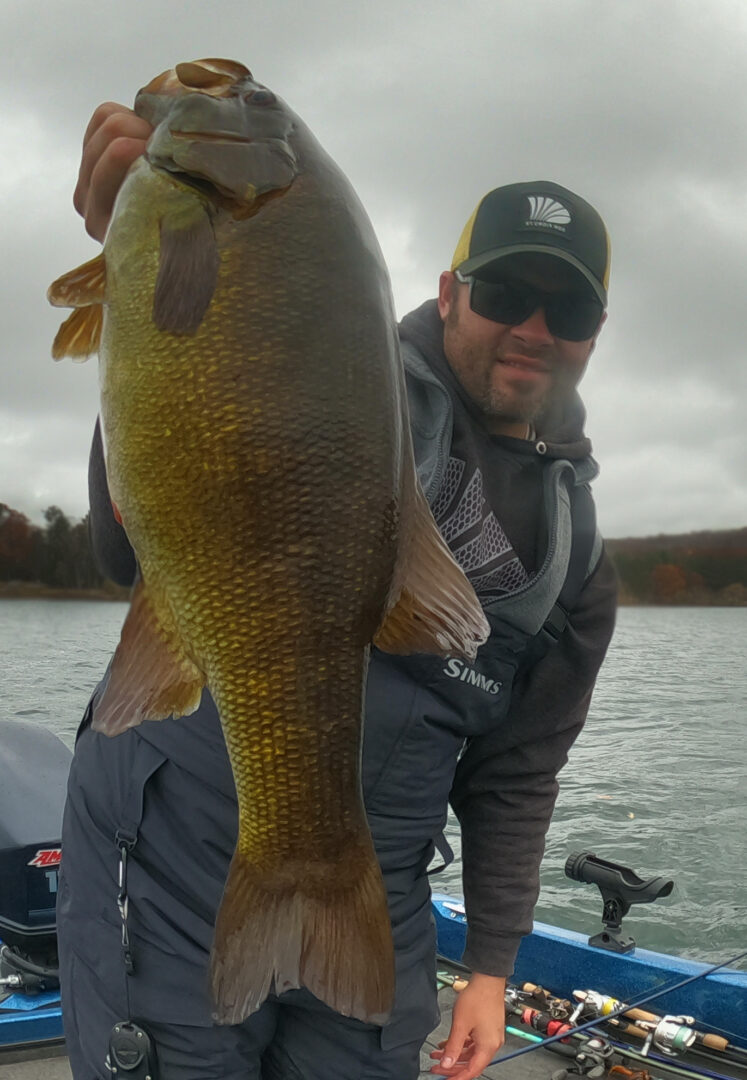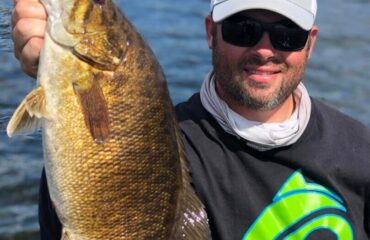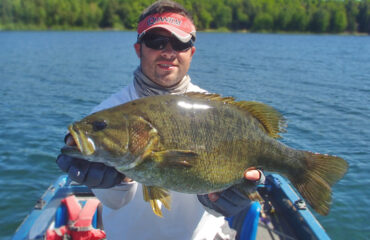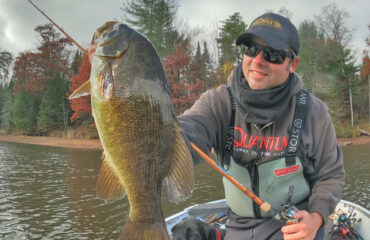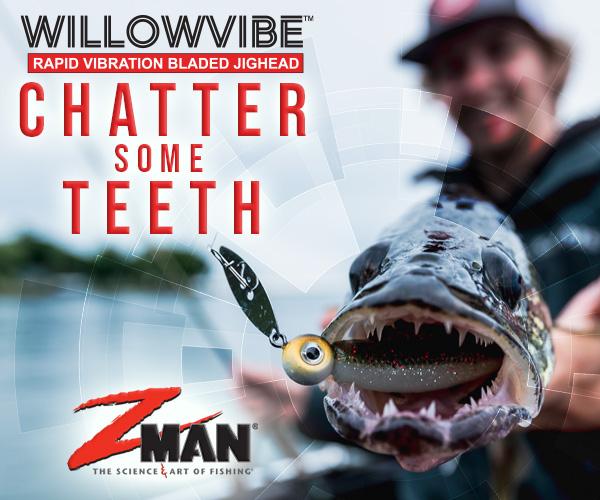Suckers for Late Fall Smallmouth
Guides and the most serious late season anglers rely on live bait almost exclusively. Across most fisheries, live minnows work. Folks can fish with only a single rod with live bait rig in-hand, or under a multi-rod, two-pronged approach like I do while continuing to cast and jig with artificials. Two lines in the water are always better than one.
When fall season fast approaches and water temps crest below 60, I get fanatical about it. Whether caught by hook and line yourself, or trapped by a bait trapper and then sold to bait shops, a wild live minnow native to the system you’re fishing is always going to be more effective than an artificial lure.
This game can be a little unfair. But the objective here is to continue catching as water temperatures are dropping. Because once they get too cold for the smallmouth’s liking, it’s game over. They’ll turn mostly dormant. The peak for live bait usage in my boat happens when water temperatures range from the low-50’s to mid-40’s. By then, we could be only a few more cold days away from iced-up boat launches.
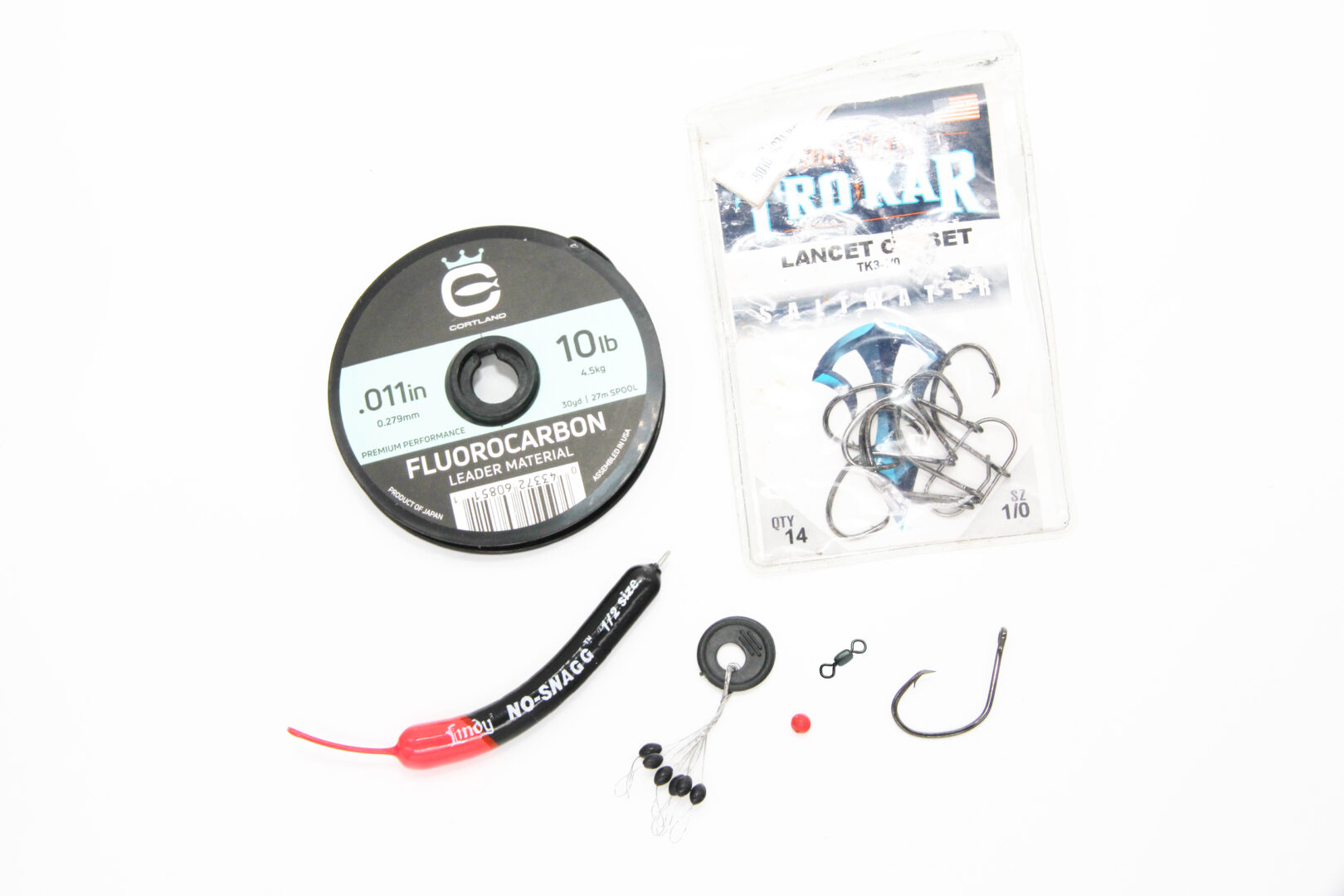
Most live bait anglers opt for redtail chubs, creek chubs, or walleye suckers. The ratio of preference and usage seems to vary according to preference and availability. Some anglers swear by big, fat, juicy chubs. I, on the other hand like large walleye suckers. If I had the time to trap and catch my own wild live bait from nearby streams like some live bait experts do, then perhaps then I’d be all-in on creek chubs like they are.
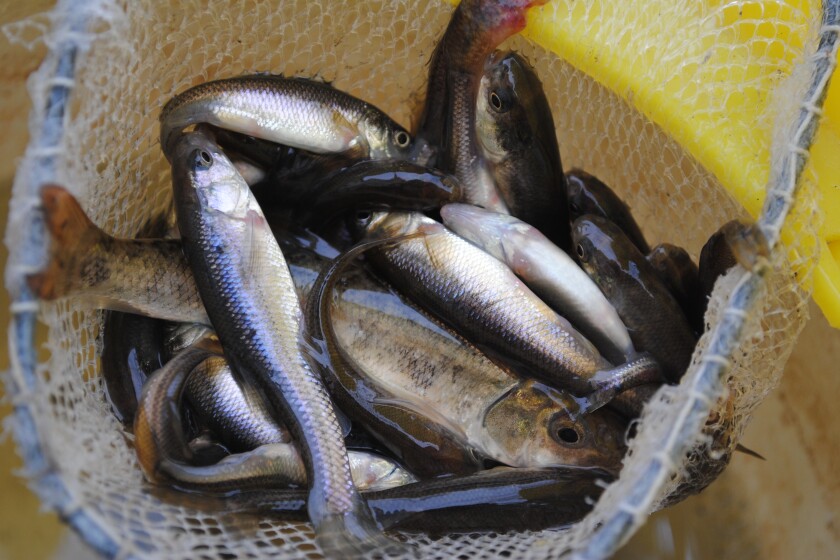
Currently, 4-to-6-inch walleye suckers are my jam. These bait options usually consist of juvenile white sucker, and northern hogsucker. They are deadly for big smallmouths on northwoods lakes and rivers, and get engulfed by several big smallmouths every October. Late fall, they are prone to catching our biggest smallmouths of the year.
Most lake and river smallmouth fisheries contain populations sucker species. Several bait shops supply them too. Good, fresh, and lively bait that is native to the system is most ideal.
Nose hooked, walleye suckers are hearty, powerful, and energetic in cold water. In warm water, not so much. I feel they are livelier than at least a store-bought redtail chub, and present themselves liveliest of nearly all minnow species available. This is all up for debate, however, as no store-bought bait can ever compare to the fresher, wild-caught versions. Compared to other live nude minnow options in my region, walleye suckers are much easier to find and acquire. Be sure to always call your local shops beforehand to make sure they carry an ample supply and in the sizes needed. Drought conditions or flooding to area rivers and streams can greatly impede and halt most commercial bait trapping and delivery, as can commercial overharvest.

It seems to me that more anglers would use live minnows in fall, but the biggest preventives of this are mess, maintenance, responsibility, and cost.
Most anglers would rather not lug around a bucket of minnows with them. To keep them alive throughout the day, aeration is necessary along with intermittent water changes. Thankfully, Plano Tackle and Engel Coolers have portable battery-powered aeration bait coolers to keep them lively for up to a few days at a time.
Nowadays, a dozen 4-to-6-inch walleye suckers costs upwards of $6 to $12 per dozen. Redtails – even more expensive. However, a bait shop minnow-man’s generosity of scooping up some extras can help minimize the hit to your wallet. Ideally, I want to start every day with at least 3-dozen lively minnows swimming in my Ranger’s aerated baitwell.
If catching or trapping from small streams isn’t an option for you, always buy wild trapped and freshly-delivered minnows, and never settle for pond raised. It’s more than fair to be particular and picky over this pricey investment.
At my local minnow tanks, I always inspect what’s in stock first, and then request to scoop and select my own. If they look big and lively, I always buy more than might be necessary.
